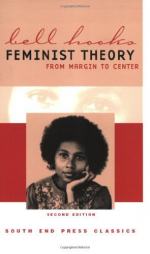
|
| Name: _________________________ | Period: ___________________ |
This quiz consists of 5 multiple choice and 5 short answer questions through Chapters 4 and 5.
Multiple Choice Questions
1. When and where did the author enroll in her first women's studies class?
(a) At Stanford in the 1970s.
(b) At Howard in the 1970s.
(c) At UCLA in the late 1960s.
(d) At Brown in the early 1980s.
2. Who has portrayed the relationship between feminism and the family in this way? (See question # 61)
(a) All men.
(b) The child protective services.
(c) Most feminists hold this view.
(d) Outsiders to the movement and sometimes feminists in the movement who want to create women-only communities.
3. How are black and white men the same in the author's view?
(a) They are not the same in the author's view.
(b) They both do not want women to be strong and assertive.
(c) They both stand to lose power as a result of feminism.
(d) They are both capable of sexual oppression and violence against women, whether sexual or non-sexual.
4. What was the shared feeling that helped define sisterhood in the early years of the movement, according to the author?
(a) A sense of victimization.
(b) Desire for greater affluence.
(c) A love of adventure.
(d) Artistic inspiration.
5. The author cites Lillian Hellman's autobiography as an example of what kind of phenomenon?
(a) White women projecting mythical power and strength on black women while presenting themselves as powerless.
(b) An early white feminist who listened to women of color.
(c) White women being afraid to tell their domestic servants what to do.
(d) An rare example of working class writing.
Short Answer Questions
1. For the author, what perspective really changed the direction of feminist thought?
2. What can happen to women in light of the social views about their gender?
3. In the Preface to the second edition (2000), how does the author describe the original reception of her book?
4. How does the author feel about defining feminism as enabling total personal freedom?
5. For the author, what is the relationship between traditional beliefs about the family and society at large?
|
This section contains 497 words (approx. 2 pages at 300 words per page) |

|




